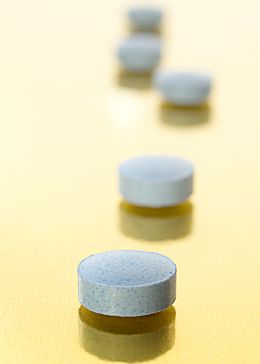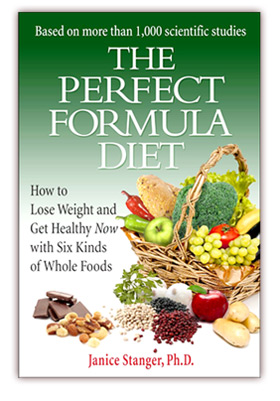This Misnamed Essential Can Accumulate to Dangerous Levels

This is the first-choice source of vitamin D for most people. The sun, which powers life on earth, also energizes your skin to manufacture vitamin D, which is better understood as a hormone than as a vitamin.
To understand how to get enough vitamin D without poisoning yourself with too much, first you need to realize that this essential is not a vitamin at all. By definition, a vitamin must come from what you eat. Yet vitamin D is scarce or nonexistent in virtually all foods, unless artificially added.
Nature intended that humans manufacture their own vitamin D when certain ultraviolet rays from the sun strike skin. How do we know this? Because your skin cells have the ability to make D, and will do so whenever you allow them to. Humans thrived for eons before vitamin D supplements were available, so clearly these are not necessary for healthy life.
Vitamin D is actually a hormone, a necessary substance your body makes by itself. This essential was misnamed back in the 1920s, when researchers were first discovering vitamins. They had already named vitamins A, B, and C, so D became the mystery substance in cod liver oil that cured children with rickets. These children got rickets, a previously rare condition, because they lived in polluted cities that blocked the sun and spent their lives indoors. They did not get rickets because of a cod liver oil or other food or supplement deficiency.
To make all the vitamin D you need, store it effectively, and deliver and activate it as needed, you must keep many parts of your body healthy, including your skin, liver, kidneys, brain, and circulatory system. The process is complex and can become faulty at many points for many reasons.
The bottom line is that you need to stay healthy overall to make and use your own D the way nature intended. This assumes sufficient and the right kind of sunshine. The sun is the fuel that powers your vitamin D factory. And, as always, a whole foods, plant-based diet is the foundation of health.
D pervades your body in three forms, each one critical to its role.
Your skin makes the storage form of D when a specific kind of sunlight hits it. Your body destroys any excess so you can’t overdose. You stash the D you will require later in tissues throughout your body. The storage version of D is not the biologically active form but can be stored for a long time.
Since the stored vitamin D is not very accessible, your liver converts controlled amounts of it to circulating D (also called 25-hydroxy vitamin D). This substance can safely circulate until needed because it has very low biological activity.
Finally, your kidneys (and potentially other cells) convert circulating D to highly potent activated D (also called 1,25 dihydroxy vitamin D). You body needs to keep the amount of activated D within extremely tight limits, because too much or too little can cause immediate harm. Activated D survives only for a matter of hours.
This is easier to understand if you think of it like gasoline. The stored D is like the gas in your car’s tank. The circulating D is like the

Your car will chug along most happily when the optimal amount of gas hits the engine. Too much could be catastrophic.
gas that has been pumped out of the tank, but has not yet made it to the engine. The activated D is like the gas that is actually burning in the engine at any given moment. This amount needs to be strictly gauged. The main difference is that, as D moves through your body from one form to the other, it is actually converted to a different substance at each stage.
Scientists disagree on the precise amount of D you need. Here’s the thing. No one can measure the amount of D stored in your body, which would be a critical number to know. So labs measure the amount of D circulating in your blood instead. Many experts advocate that circulating D be between 30 to 70 nanograms per milliliter (n/m) of blood. D deficiency is frequently diagnosed at less than 20 n/m, while D insufficiency is generally labeled at 21 to 29 n/m.
However, remember that the number that most matters is the amount of activated D, which your body will vary by only a tiny amount. So it’s hard to understand why the level of circulating D is so critical, if you have enough reserves to meet your needs. The prestigious Institute of Medicine released a report in 2010 that vigorously challenged the “more is better” view of vitamin D. Instead, the Institute concluds that 20 to 30 n/m of D is optimal for bone health, and that nearly all Americans fall into this range.
The report knocks high-dose vitamin D supplements as having risks without proven benefits. The Institute recommends a supplement with 400 IU a day of D for people who get minimal sun. The report warns that supplements with doses of D greater than 10,000 IUs a day are associated with kidney and other tissue damage; but that lower levels can also be harmful. There are not

The recent report from the prestigious Institute of Medicine warns against the dangers of high dose vitamin D supplements. Some people may require supplements, but carefully consider the dose and whether sunshine is an alternative.
enough data to figure out the maximum safe dose.
In order to manufacture D the way that nature intended, you need time in the sun near midday without sunscreen. This is because the sun’s UVB rays, which fuel your skin’s synthesis of D, are most plentiful between 10 am and 3 pm. Earlier and later in the day, sunlight is mostly composed of UVA radiation, which penetrates the skin more deeply to generate free radicals and speed skin aging. Yet UVA is powerless to form vital vitamin D.
The length of time each individual needs in the sun varies quite a bit. Here are some factors that increase the amount of time required to make enough D: darker skin, older age, obesity, sun filtered through polluted air or overcast, and certain medications. There are no simple, rule-of-thumb solutions.
Some experts advise you get enough midday sun to turn your skin just pink. Do avoid sunburn, and shield your face from the sun, as well as any areas of skin that have been previously damaged. In our sun-phobic society, you may be surprised to learn that moderate sun exposure has not been substantiated to increase the risk of skin cancer. In fact, people who routinely work at least part of the day in the sun actually have a lower risk of melanoma, the most deadly form of skin cancer.

Life on earth evolved with the sun over billions of years. Carefully consider the dire warnings that the sun is toxic. Instead, might it be profitable commercial sunscreens that are toxic?
Work with a health care provider as needed, especially if you have concerns about a specific health condition. However, educate yourself and don’t rely on any one “expert” to make sure you have the optimal amount of D. This is an area of legitimate controversy, so you want to avoid jumping to extremes or relying on limited information.
So here’s the big picture. The antioxidants in whole plant foods help protect your skin against wrinkles and damage while you are in the sun making your vitamin D. These same foods help safeguard your liver and kidneys, both essential to converting D to its final, active form. A whole foods, plant-based diet can also prevent – and even reverse – the build-up of plaque in your arteries. This plaque impedes the free circulation of D where it is needed.
Even though D is a hormone and not dietary-based, you still need to eat healthy to maximize your ability to manufacture, store, and use D. Now isn’t that a happy fact.
Intrigued? Now you can use our Whole Foods Blog Finder to target informative, fun postings on plant-based nutrition. Quick information at no cost!
Blog posting by Janice Stanger, Ph.D. Janice authored The Perfect Formula Diet, the smart person’s nutrition book built on sustainable food choices. Enjoy six kinds of whole foods for permanent, hunger-free weight loss and health.
Tags: antioxidants, getting healthy, Janice Stanger, Plant-based nutrition, rickets, vitamin D, whole foods





I like what you’re saying here but it doesn’t really clear up what to do. Veglife D tablets are 2000 IU. If it’s been cloudy for week should I take one tablet? I get out 2 or 3 times a week in the sun, more when it’s really nice. Seems like it’s hard to figure out.
Janice,
Excellent article on the benefits of sunshine exposure and the ability of the body to synthesize vitamin D. I grew up and continue to reside in a high sun intensity area (South Florida). I have always enjoyed moderate sun exposure despite dire warnings from dermatologists. I have never used sunscreens. Instead I use hats and clothing to avoid burning during the most intense sun exposure times. I was diagnosed by a dermatologist 10 years ago that most of the exposed areas of my body (arms, shoulders and areas of my back) were loaded with pre-cancerous skin lesions. I was to watch these areas, avoid ALL sun exposure, and have them monitored periodically. Instead I adopted a plant based vegan diet, combined with moderate sun exposure. The lesions which were red and bleeding have almost completely disappeared. They develop white scab like coverings and eventually disappear!
You might find some tablets that are 400 IU. That is the amount the Institute of Medicine recommends. Vitamin D is the most complex essential, so you might have to try a couple of different strategies to find one that works. You can store D for months, so don’t worry about one cloudy week, or even month.